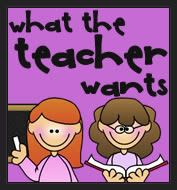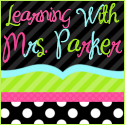I think I have carried Science books all over the planet this week. My bag has been full of books that have finally come in from previous orders. And I have spent a lot of time talking and thinking about Science in Kindergarten this week so this post has been on my mind. One part of some of the Science discussions this week has been about making connections. Not only about making connections to previous Science experiences but making connections across the curriculum. As teachers of young children, we know how important making those connections are to enduring understandings. Teaching a stand alone Science unit is one thing but connecting it to previous meaningful experiences and connecting it to other areas of the curriculum is another. We also know that just one learning experience, investigation or discovery is not enough. We know that children need a multiple exposure approach before they make connections that lead to enduring understandings.
When I discovered the book, When Rain Falls by Melissa Stewart, it made me instantly think about...connections. As I read the book page by page I could see this book had some pretty powerful real world connections and some powerful connections to our learning experiences in my classroom. Not only did I think about our investigations this year but I also thought our our discussions or after session share. Our after session share time has been so valuable in my classroom. Not only have we learned about how other children "see" a problem and learn how they solve it but this time allows us the opportunity to use vocabulary and hear it spoken and it gives us an opportunity to understand what connection the child has made with the learning experience. For so many reasons these after session share times are valuable and we become connected as a community of learners because we begin to understand another person better and their way of thinking.

As teachers of young children and especially Kindergarten teachers, we often times get criticized for not teaching the Science content when people evaluate our work. When people see the "cutesy" stuff we create we often get that type of response. I can see how this misconception happens when they see rooms and displays with penguins and ladybugs made by Kindergarten children. Those ladybugs and penguins are just our vehicle to drive our Science content. It is not that we are teaching all about a ladybug but it is the vehicle to teaching about a life cycle. Those "cutesy" ladybug and penguin Thinking Maps and Anchor Charts are our way of helping our children make...connections to the Science content. And sometimes it does look "cutesy" because we understand the mind of young children. We are so lucky as Kindergarten teachers to work with children who view the world through innocent eyes and an innate natural curiosity about the world around them. It is that innocence and curiosity that is almost magical when we explore Science with young children. For many of us, it is that connection that draws us to our profession.

As teachers of young children we often get criticized for not teaching Science to the depth that is required or without enough rigor. If we read a book about a Science related topic and make some cute and crafty product and leave it at that, then I would have to agree that the depth and rigor has not been met and our goals and objectives have not been met either. Science should be so much more than just a book and discussion. Children have to experience it, discover it and question it several times before they begin to make connections. Multiple experiences lead to a deeper understanding and often leads to more questioning as children begin to understand the content. A skillful Science teacher can increase the rigor by conferencing with children, guiding and supporting independent problem solving and setting the stage for more investigating, discovering and exploring. And just like a real Scientist, children may have to retest their discoveries before they actually believe and understand them.

The reason why When Rain Falls made the connection within my classroom because it connected so many things we have studied in Science this year from how animals and plants use and depend on natural resources, animals in their natural habitats, landforms within our Social Studies unit and weather. The book provided us a visual that connected our classroom experiences to the world around us and helped us see the connection between different organisms and their environments. And our discussion was rich with those connections.













.JPG)




















